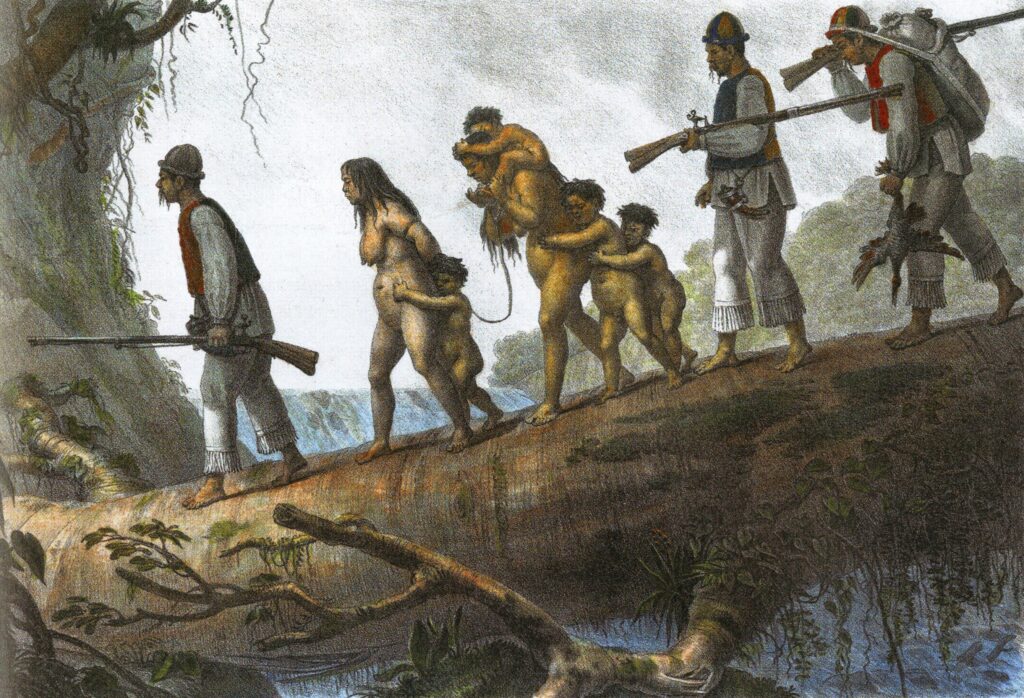Source: Indian soldiers from the province of Coritiba, bringing back captives (Jean-Baptiste Debret, “Sauvages civilisés soldats indiens de la province de la Coritiba, ramenant de sauvages prisonniéres”)
Jean-Baptiste Debret, was a French painter who lived in Brazil between 1816 and 1831. He was a professional artist who painted royal and upper-class subjects and scenes. However, he is perhaps best known for his images of the daily life of Brazilian people, including indigenous people and slaves. During the 19th century, Brazil had an enormous population of slaves, many of whom had been abducted in Africa and others who were stolen from indigenous tribes, like the Guaraní women and children in this image. As an upper-class resident of Brazil, Debret benefited from the slave labor that was supported Brazil’s economy, yet he was apparently conscious of the tragedy and brutality of the practice and was able to show it in his art. These victims seem to be experiencing their first hours of captivity. Debret stresses the contrast between the captors, who wear clothes and carry guns, and the naked captives. Lack of clothing is a common sign of a captive or enslaved person throughout the world. The two women are roped together, and their unhappy children cling to them. Debret has also clearly distinguished hunters and the hunted. The captors seem to be hunting both animals and humans. They carry guns and one hunter has a dead bird. Both the captives (“sauvages prisonniéres”) and the captors (“sauvages civilisés soldats) are indigenous people. When Europeans entered the New World, they increased the practice of slave raiding and captive-taking among indigenous people. Slave raiding existed long before Europeans arrived, but the European market for slave labor made captive-taking very profitable.
Contributed by Catherine Cameron. This contribution CC BY-NC-ND 4.0.

Discussion Questions
- What can we discern about the individuals depicted in this image? What does their clothing (or lack of it) tell us about the relationship between the individuals? What can we learn from the objects they carry or that are attached to them?
- What can we learn about what the artist intends to depict by the attitudes of the figures in the image? Does the artist seem to be sympathetic or is he simply documenting what he saw?
- Can you discern common elements of the captive experience in this image? For example, compare it to the “Related Primary Sources.”
Related Primary Sources
- La Cautiva Marcelina
- Initial Q from the Vidal Mayor: Two Soldiers Leading Two Slaves before a King
- Yanoáma: The Story of Helena Valero
Related Secondary Sources
- Barr, Juliana. Peace Came in the Form of a Woman: Indians and Spaniards in the Texas Borderlands. Chapel Hill: University of North Carolina Press, 2007.
- Brooks, James. Captives and Cousins: Slavery, Kinship and Community in the Southwest Borderlands. Chapel Hill: University of North Carolina Press, 2002.
- Snyder, Christina. Slavery in Indian Country. The Changing Face of Captivity in Early America. Cambridge, MA: Harvard University Press, 2010.
